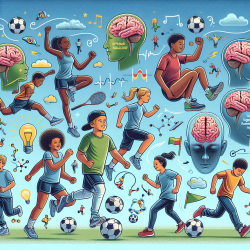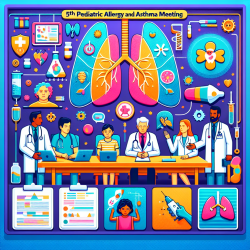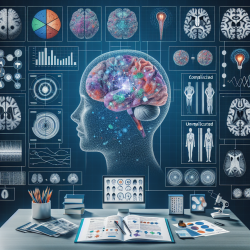Introduction
As practitioners dedicated to fostering positive outcomes for children, understanding the intricate relationship between physical activity and cognitive development is crucial. A recent study titled "Effect of high-intensity interval training on hippocampal metabolism in older adolescents" offers groundbreaking insights into how exercise can enhance brain function in adolescents. This blog explores the study's findings and provides actionable steps for practitioners to integrate these insights into their practice.
Key Findings from the Study
The study, conducted by Valkenborghs et al., focused on a school-based physical activity intervention known as "Burn 2 Learn" (B2L). The research involved 56 older adolescents with lower fitness levels and examined changes in hippocampal metabolism using magnetic resonance spectroscopy. The key findings include:
- Increased Metabolism: Participants in the B2L intervention showed significant increases in N-acetylaspartate (NAA) and glutamate+glutamine (Glx) concentrations in the left hippocampus.
- Improved Fitness and Memory: The increase in hippocampal metabolites was associated with enhanced cardiorespiratory fitness, muscular fitness, and working memory.
- Potential Mechanisms: The study provides evidence for potential mechanisms linking physical activity with improved executive function in adolescents.
Implications for Practitioners
These findings underscore the importance of integrating physical activity into interventions for adolescents. Here are some practical steps practitioners can take:
- Promote Physical Activity: Encourage schools and parents to incorporate regular high-intensity interval training (HIIT) into daily routines.
- Collaborate with Educators: Work with educators to design school-based programs that integrate physical activities aligned with cognitive development goals.
- Monitor Progress: Use data-driven approaches to track improvements in fitness and cognitive function, adjusting interventions as needed.
Encouraging Further Research
While this study provides valuable insights, further research is necessary to validate these findings across larger samples and diverse populations. Practitioners are encouraged to stay informed about ongoing research and consider participating in studies that explore the link between exercise and cognitive development.
Conclusion
Incorporating physical activity into interventions for adolescents can significantly enhance cognitive function and overall brain health. By leveraging the findings from this study, practitioners can make informed, data-driven decisions to improve outcomes for the children they serve.
To read the original research paper, please follow this link: Effect of high-intensity interval training on hippocampal metabolism in older adolescents.










